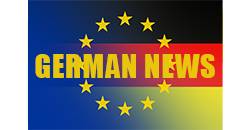-
Trump’s Reason Behind Alien Enemies Act Contradicted By New Intel - 27 mins ago
-
At Least 2 Killed and 6 Injured in Florida State University Shooting - 29 mins ago
-
4 Prospects Houston Texans Should Avoid With No. 25 Pick In 2025 NFL Draft - about 1 hour ago
-
Pride and Dread in Harvard Yard as Trump Wars With the University - about 1 hour ago
-
NFL Draft 2025: Don’t Be Surprised If These Prominent Players Aren’t First-Round Picks - 2 hours ago
-
California Marines killed during military exercise in N.M. are ID’d - 2 hours ago
-
What We Know About the Gunman in the Florida State Shooting - 2 hours ago
-
Democratic Senator Says He Met With Kilmar Abrego Garcia: What We Know - 2 hours ago
-
Dual Orders Over Trump Deportations Edge Courts Closer to Confrontation With White House - 3 hours ago
-
FSU Shooting Witness ‘Can’t Stop Thinking’ About Woman She Saw Get Shot - 3 hours ago
Stocks Jump in Asia After Trump’s Tariff Reprieve
Following President Trump’s decision to pause punishing tariffs on dozens of countries, markets in Asia reacted predictably: Stocks soared in the countries that were spared.
In early trading on Thursday, benchmark indexes rose more than 9 percent in Taiwan, 8 percent in Japan and 5 percent in South Korea. All three Asian economies were among the U.S. trading partners given a 90-day reprieve from Mr. Trump’s so-called reciprocal tariffs.
While the U.S. allies won’t immediately face the 24 percent to 32 percent tariffs the Trump Administration had previously threatened, they will still be subject to a lower rate of 10 percent. That comes on top of 25 percent tariffs that Mr. Trump has imposed on goods including cars — a particular sore point for big auto exporters Japan and South Korea.
In the United States, the reversal by Mr. Trump on Wednesday sparked the biggest one-day rally of the S&P 500 since October 2008, when stocks soared as investors anticipated central bank rate cuts in the wake of the global financial crisis.
On Wednesday Mr. Trump did not walk back the new tariffs, exceeding 100 percent, that he has put on China since taking office in January.
Washington and Beijing have traded multiple rounds of tariffs, pushing the cost of their trade with one another to extraordinary levels. China leveled the latest salvo on Wednesday, bringing its across-the-board levies on American imports to 84 percent.
President Trump said on Wednesday that he did not think he would need to raise tariffs on China higher than 125 percent and that he expected Xi Jinping, China’s leader, to reach out about a deal. “I can’t imagine it. I don’t think we’ll have to do it more,” he said of additional tariffs on China. “No, I don’t see that.”
In trading on Thursday, stocks listed in Hong Kong gained around 4 percent, while those listed in Shanghai gained about 1 percent.
Over the past week, Mr. Trump’s trade broadsides have sent markets into a tailspin and threatened to upend global trade. Even after the rally on Wednesday, the S&P 500 remains roughly 12 percent below its February peak. It was also the index’s worst start to a presidential term since the dot-com bubble burst at the start of 2001.
In Asia, stock benchmarks have fallen more than 12 percent in Japan, and more than 16 percent in Taiwan this year. South Korea’s Kospi index has remained roughly flat.




















